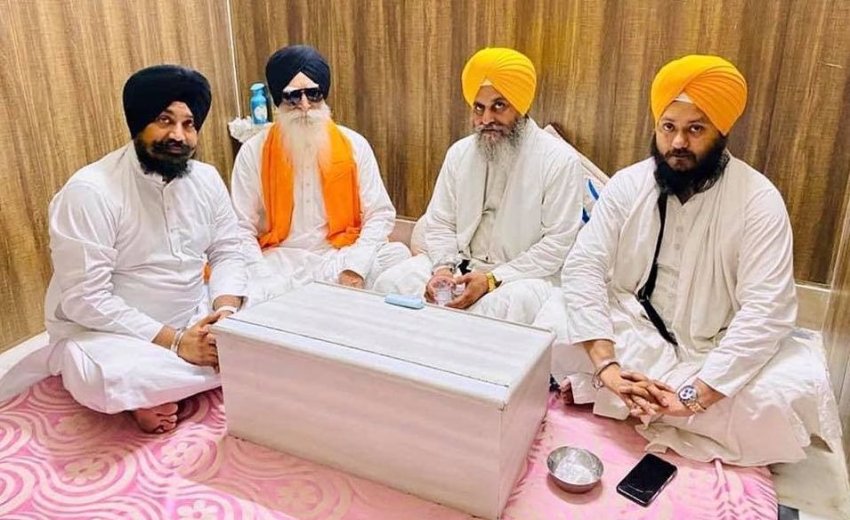Gurmej Singh said that it was the first occasion they had performed the 'sehaj path' using Braille-transliterated Gurbani.
*Based on an article by J Singh, published in Sikh Sangat on 15th July 2013
In 2013, something remarkable happened at the Akal Takht: Bhai Gurmej Singh performed the 'sehaj path' from the Braille version of the Guru Granth Sahib for the first time ever. Bhai Gurmej Singh, a visually impaired former 'raagi' of the Golden Temple, took the initiative to transcribe the sacred verses of Gurbani into Braille. This unique version of the holy book is kept in Room No. 13 of the Golden Temple complex, making it accessible to visually impaired devotees who seek solace and spiritual guidance.
The Braille version of the Gurbani spans across 18 volumes, containing 2,153 pages, each page measuring 11×12 inches in size.
Gurmej Singh, who devoted thirty years of his life in service at the Golden Temple and retired in 1998, had taken upon himself the task of creating Braille copies of the holy book. His dedication resulted in the production of six Braille copies. The first of these copies was graciously gifted to visually impaired children at the Central Khalsa Orphanage in Amritsar, a place dear to his heart as it was where he spent his own childhood. The second copy found its place within the hallowed walls of the Golden Temple itself.
Gurmej Singh mentioned that it was the first occasion they had performed the 'sehaj path' using Braille-transliterated Gurbani. This marked a significant moment as it allowed visually impaired individuals to access and participate in the religious practice with ease. “I presented other copies to an old-age home for the blind near Phagwara, a home for the blind at Ludhiana and the Gurdwara Rakab Ganj in Delhi. I kept the sixth copy for myself. It is placed at my house,” he said.
Gurmej Singh and his family received a ceremonial 'siropa' from Akal Takht Jathedar Giani Gurbachan Singh and SGPC president Avtar Singh. The 'siropa' is a traditional honor bestowed upon individuals for their contributions or achievements. It is a sign of respect and recognition within the Sikh community. This gesture symbolizes the appreciation and acknowledgment of Gurmej Singh and his family's dedication and service.

